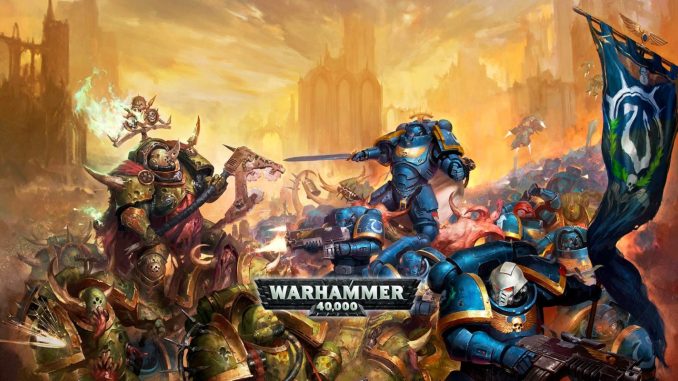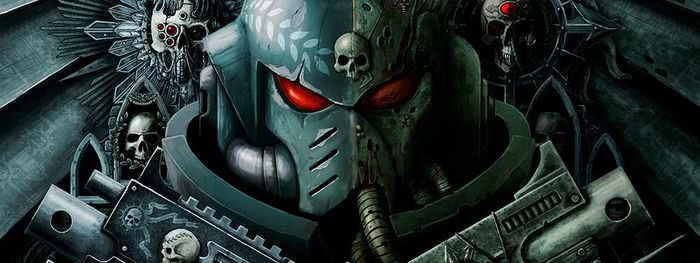Hi everyone, Michael here to talk about what I think are the best aspects of the current edition of the game. For more reviews and analyses, check out the Tactics Corner.

It’s hard to believe that 8th edition is almost 3 years old at this point. There have been so many rules updates and new books that this edition seems to have been going on forever. I thought I would take a look back at some of the aspects of 8th edition that I have particularly liked. I’m not saying the game is perfect, but there are a lot of aspects of 8th edition that I think have been great for the game.
As always, this article is entirely my own opinion and my own thoughts on the game. Feel free to comment below on what you have enjoyed during our time with 8th.
- Simple Rules
One big change that came with the start of 8th edition was a simplified ruleset. We went from a huge rulebook to a simple sheet with 8 pages of the core rules for the game.
Upon seeing the rulebook for 40k under previous editions, the biggest question from friends and family was “how do you remember all of that?!?”. Well, a lot of the times you didn’t. 7th edition was a mess of overlapping and complicated rules that could cause a lot of problems, particularly in competitive play.
With 8th edition, you have a simple sheet with all the core rules to hand. It’s easy to pick up and really easy to teach. There is a big psychological difference between handing a new player an 8-page pamphlet and saying “these are the core rules”, to handing them a 70-page hardback rulebook and saying “these are the core rules to learn”.
I’m not saying there is not still a large volume of rules in the game. Much of the core rules have moved to datasheets and expansions, but I still think the rules themselves are pretty simple and easy to follow. I can’t think of the last time I had to refer to the core rules sheet. Additionally, I cannot think of the last time that I had to call a judge over at a tournament for a rule clarification in 8th edition, an event that occurred all too frequently in 7th edition. Most of the time, when I need a judge, it is for a judgement call, or to check the wording of an FAQ.
You may not like many of the rules in the current edition of the game, but I wouldn’t go so far as to call them complicated. In fact, some people would like a bit more complexity in their game (cover rules, etc.).
As the game goes on and more expansions are released, there is a problem of having to cart around a load of books to play (So. Many. Books.), but I still think there is an inherent simplicity to the game as it now stands.

2. No More Templates
For me, this is one of the better aspects of 8th edition. Nothing caused more argument in a game of 40k than the placement and positioning of templates, as well as the facing of the dreaded Scatter Dice.
Not only did this cause arguments and delays in a game, but you also had the knock on effect of templates in the game. Waiting for your opponent to move a 30-strong unit of Orks or Termagants was especially brutal when they had to check that every model was exactly 2″ apart, so as to minimise the damage done by a large blast template.
Some people may miss the raw damage that a blast marker did for certain weapons, as the potential damage output could have been much higher than a D6 or 2D6 roll, but I think the simpler system is better and much quicker for the game.
3. Reliable Reserves
In a similar vein to the scatter dice, having a way to reliably bring in units from reserve has been a big improvement to the game.
In previous editions, you would need to roll to see if your units would come on the table, then if they arrived, roll 2D6 and the scatter die in many cases to see where they would land.
This could result in key units being delayed until they were of little use to the game. In addition, once they arrived, they had a chance of landing in a completely pointless area of the battlefield or being destroyed by landing on enemy units or impassible terrain. A lot of times, the game could swing on a bad reserves roll or deep strike mishap. This also gave the Space Marine Drop Pod a huge power boost for such a cheap model, as it gave Marines a way to safely arrive from deep strike, as well as allowing them to arrive on turn 1.
These days, deep striking or arriving from reserves is a lot more predictable. While there is an argument that this makes some units too powerful, it is nice not to lose the game on a single bad scatter die roll. You trade off the reliability for having to make a relatively long charge from reserves, unless you get a boost from a special rule. This does make some firepower units very powerful, as they can always get into range for optimal firepower.
4. Everything can be hurt
For me, another great aspect of the game is that anything can be hurt by any weapon, where the humble Lasgun can take down an Imperial Knights.
One of the most frustrating aspects of previous editions of the game was that some units were actually unkillable by other units in the game. The one that always sticks to mind was the Wraithlord or Wraithknight. These T8 models were immune to weapons that were S4 or lower. This meant that if a Wraithlord charged your unit of Space Marines or Orks, there was simply no way for the majority of the unit to harm it. Unless you had a special close combat weapon with increased strength or access to a high strength grenade, your unit simply sat there being slowly whittled down. Your only hope was to fail a morale test and hope you didn’t get caught as you tried to flee.
The fact that anything can be harmed in the game always gives you a slim chance of taking out a big enemy threat with your lowly units. With enough time and firepower, you can take down anything in the enemy army and no longer get the situations that you did above, where there was no interaction with enemy units, other than removing models from the board.
5. GW Interaction
This is one of the biggest changes from previous editions of the game, and it is all the better for it, in my opinion.
In the past, you were lucky to get one FAQ every couple of years to try and sort out major problems or rules conflicts with the game, and GW seemed to do very little interaction with the community as a whole.
It’s hard to believe that was the case, given the new direction that GW have taken with 8th. FAQs are published a couple of weeks after the books are released, as well as yearly updates of points through Chapter Approved. Even Warhammer Community is killing it these days, giving advance previews of models and rules, and letting players know what is coming down the pipeline.
This can get annoying when your shiny new book is out of date after only a couple of weeks, but I think this is definitely preferable to the previous situation that we were in.
I’m sure that Reece and the others at Frontline Gaming do not miss doing their own FAQ each year, and all the hard work and abuse that came with that! Though that does mean that Reecio has had to get more subtle in his manipulations to ruin the T’au now.
So, those are just a few of the aspects of 8th edition that I have enjoyed in the past years. Let me know what your favourite parts of the game have been below.
And remember, Frontline Gaming sells gaming products at a discount, every day in their webcart!
